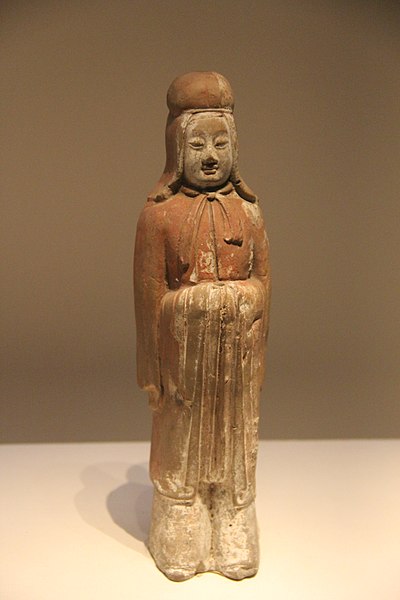Ge Hong, courtesy name Zhichuan (稚川), was a Chinese linguist, Taoist practitioner, philosopher, physician, politician, and writer during the Eastern Jin dynasty. He was the author of Essays on Chinese Characters, the Baopuzi, the Emergency Formulae at an Elbow's Length, among others. He was the originator of first aid in traditional Chinese medicine and influenced later generations.
Ge Hong as depicted by Gan Bozong, woodcut print, Tang dynasty (618–907)
The Jin dynasty or the Jin Empire, sometimes distinguished as the Sima Jin (司馬晉) or the Two Jins (兩晉), was an imperial dynasty in China that existed from 266 to 420. It was founded by Sima Yan, eldest son of Sima Zhao, who had previously been declared the King of Jin. There are two main divisions in the history of the dynasty. The Western Jin (266–316) was established as the successor to Cao Wei after Sima Yan usurped the throne from Cao Huan and took the title of Emperor Wu. The capital of the Western Jin was initially in Luoyang, though it later moved to Chang'an. In 280, after conquering Eastern Wu, the Western Jin ended the Three Kingdoms period and reunited China proper for the first time since the end of the Han dynasty.
Western Jin-era porcelain figurine
Yue ware with motif, 3rd century CE, Western Jin, Zhejiang.
Pottery tower, Western Jin, 265–317 CE.
Celadon lion-shaped bixie, Western Jin, 265–317 CE.





